[Editor’s Note: Army Mad Scientist welcomes today’s guest blogger LTC Christopher J. Heatherly with his thoughtful piece exploring what we are missing in contemporary military planning — assessing the risk of success. Using two historical use cases from the opening months of both the Korean conflict and Operation Iraqi Freedom, LTC Heatherly explores the pitfalls military staffs court in only mitigating the risk of failure in planning operations. While an instructor at the U.S. Army Command and General Staff College, LTC Heatherly developed a useful mnemonic aid — E/W/M/R +/- (i.e., Ends/Ways/Means/Risk (success and failure) — to help future staff officers address both success and failure in risk mitigation to ensure more thorough plans are developed, affording Commanders a greater range of options. LTC Heatherly applies this tool to the Operational Environment and the on-going war in Ukraine, querying whether Ukraine and NATO are prepared for the risk of catastrophic success? — Read on!]
Introduction
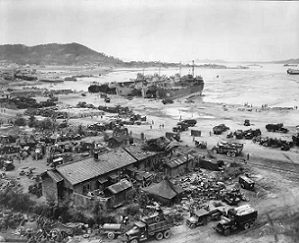
The Korean War, 1950 — U.S. General of the Army Douglas MacArthur leads the United Nations authorized military intervention to repel North Korea’s Soviet Union- and People’s Republic of China-backed invasion of South Korea. Having been nearly thrown off the Korean peninsula at the Pusan Perimeter, MacArthur orders a bold amphibious assault into the North Korean rear at Inchon. The operation catches the North Koreans completely off guard and creates the conditions for a rapid multi-front advance into North Korea proper. UN forces seize the North Korean capital of Pyongyang and are postured to advance to the Chinese border. Ignoring all intelligence to the contrary, MacArthur briefs U.S. President Harry S. Truman there is scant risk of Chinese intervention.
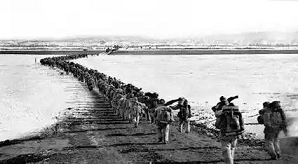
Just days later, Chinese soldiers cross into North Korea while the USSR provides air cover and supplies. Under significant Chinese pressure, UN forces conduct a brilliant fighting withdrawal South. President Truman relieves General MacArthur for defying orders. General Matthew Ridgeway assumes command while the war largely stalemates along the 38th parallel. After three more exhausting years, the combatants sign a cease fire on 27 July 1953. North Korea remains a regional problem set for the United States to this very day.
My study of the Korean War points to a significant problem in Army doctrine, in that MacArthur’s staff did not include the risk of success in their operational planning for Inchon or the follow-on pursuit into North Korea. A more robust planning effort by a forward-thinking commander and staff would have clearly elicited the danger of advancing too far North, too fast to the Chinese border, thereby creating the conditions for Chinese and Soviet military intervention. Apart from the danger to UN forces on the ground, this situation — for the first time — put two nuclear nations into conflict with the potential for a wider war. Deliberate examination of the risk of success would have identified contingency planning requirements for the UN and underscored the absolute need for a UN dialogue with the USSR and China to prevent horizontal or vertical escalation.
Risk Doctrine
To be certain, U.S. Army doctrine is replete with discussion on risk. Based upon this doctrine, military professionals normally view risk through the lens of failure to achieve their stated intent or goals. For example, a commander may direct their plans team to develop contingency options should a course of action fail. Army Doctrine Publication 3-0, Operations, defines risk as:
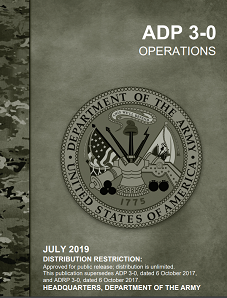 “the probability and severity of loss linked to hazards. Risk, uncertainty, and chance are inherent in all military operations. When commanders accept risk, they create opportunities to seize, retain, and exploit operational initiative and achieve decisive results. The willingness to incur risk is often the key to exposing enemy weaknesses that an enemy considers beyond friendly reach. Understanding risk requires accurate running estimates and valid assumptions. Embracing risk as opportunity requires situational awareness and imagination, as well as audacity. Successful commanders assess and mitigate risk continuously throughout the operations process.” 1
“the probability and severity of loss linked to hazards. Risk, uncertainty, and chance are inherent in all military operations. When commanders accept risk, they create opportunities to seize, retain, and exploit operational initiative and achieve decisive results. The willingness to incur risk is often the key to exposing enemy weaknesses that an enemy considers beyond friendly reach. Understanding risk requires accurate running estimates and valid assumptions. Embracing risk as opportunity requires situational awareness and imagination, as well as audacity. Successful commanders assess and mitigate risk continuously throughout the operations process.” 1
As a concept, risk is part of the larger planning model employing ends, ways, and means to accomplish an assigned mission. Briefly explained, ends are the desired objectives or end states, ways are the methodology of employment, and means are the resources available to the unit. Commanders employ risk assessments to gauge “the probability and severity of loss linked to hazards,” which allows them to facilitate risk mitigation and determine when or where to accept identified risks. In a simple example of risk assessment, a battalion commander directs the staff to plan a 5-mile unit run to assess the physical fitness and morale of his unit. The staff conducts a risk assessment and identifies heat stroke as a potential risk and assigns the attached medical platoon to have assets available (e.g., ambulance, cooling station, water points) to mitigate the same risk factors. This risk assessment process was part of every officer education level throughout my career. While doctrinally and operationally sound, it is also an incomplete concept.
History Rhymes?
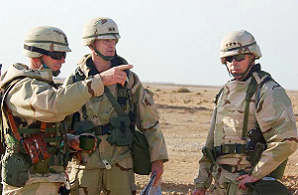
The 2003 U.S.-led invasion of Iraq, better known as Operation Iraqi Freedom, stands in my mind as the first time I considered the Army’s planning model to be deficient through direct experience. I was assigned as one of two liaison officers from the 1st Armored Division to V Corps from the series of pre-deployment exercises through the post-conflict occupation of Iraq. As part of these duties, I was seconded to the V Corps G2 ACE and later the Corps’ G5 plans team which provided a front row seat to the expected phases of a military operation — from Phase I (Shape) to Phase III (Dominate). From my perspective, V Corps developed a thorough plan through Phase III, but lacked clear guidance on the intent for Phase IV (Stabilize) and Phase V (Enable Civil Authority), nor did the Pentagon provide V Corps the necessary resources to account for the rapid collapse of Saddam Hussein’s government.
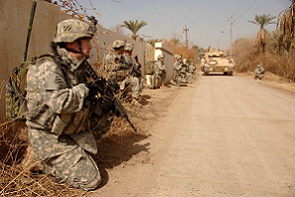
The civil unrest that followed Hussein’s fall from power is well documented and further details are beyond the scope of this paper. Suffice to say, U.S. forces were provided little direction and under resourced to restore control or prevent the widespread violence that engulfed Iraq. Similarly, the Iraqi ex-patriots expected to form Iraq’s new government and military lacked the all-important public appeal and capability to fulfill those roles. They simply disappeared from the battlefield. The ensuing power vacuum gave time and space for the multifaceted insurgency to form and virtually eliminate any chance for Iraq to develop a sustainable democratic government. The U.S.-installed Coalition Provisional Authority was dysfunctional (as evidenced by the acrimonious relationship between Paul Bremer and Lieutenant General Ricardo Sanchez) and issued unsound directives, such as disbanding the entire Iraqi Army, which further contributed to a rapidly deteriorating security situation. U.S. forces remained in Iraq until 2021 and the nation itself faces continued unrest.
Summed up, the U.S. military of 2003 made the same mistake from 1950 of not considering the risk of success. Had the Department of Defense looked beyond Phase III, considered the consequences of a rapid Iraqi government collapse (with the inevitable resumption of centuries of interreligious-ethnic violence), installed professional, capable US and Iraqi leaders, and fully resourced the military (to include meaningful interagency participation) prior to initiating the operation, the coalition may have been able to rapidly restore central control and stop the insurgency at its onset.
Recommendations
Simply stated, the U.S. military should incorporate the risk of success into its planning methodology and doctrine. During my assignment as an instructor at the U.S. Army’s Command and General Staff College, I taught American and allied field grade officers the Joint Operations Planning Process (JOPP), as well as an introduction to Design Theory which, at the time, was still relatively new to the larger military. The students were generally familiar with the ends, ways, and means construct and experienced in the risk assessment process. To assist the students’ planning abilities, I developed a shorthand annotation as a mnemonic tool employing the traditional ends, ways, means, and risk model, albeit with a critical addition – namely, the risk of success. The tool read as “Ends/Ways/Means/Risk (success and failure)” or as E/W/M/R +/- in shorthand. The students’ inclusion of both success and failure in risk ensured more thorough plans development that also afforded a greater range of options to the commander during the inevitable unforeseen conditions, whether challenges or opportunities, which arise during a military operation.
The E/W/M/R +/- theory is just as applicable today as it might have been in the Korean War or Operation Iraqi Freedom. World attention is currently focused on the criminal Russian invasion of Ukraine. In contrast to the expectations of most experts, Kyiv successfully defeated Moscow’s invasion and now threatens to retake territory lost in the 2014 Russian seizure of Crimea and the 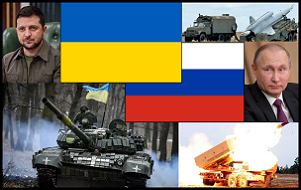 Donbass. Where the West once feared the risk of failure if Ukraine fell to Russian territorial aggression, it must now consider the risk of success should the Ukrainian military enjoy further battlefield victories which reclaim ground Moscow considers sovereign territory. The U.S. military and its allies should also consider the risk of catastrophic success should Vladimir Putin be removed via internal or external actors. It is unlikely Putin would be replaced in a smooth transition of authority, with several actors looking to assume power and some Russian states seeing an opportunity for independence. As with Iraq in 2003, the absence of a strong central authority will again create conditions for interethnic/religious or intra/interstate conflicts with the added wildcard of Russia’s vast weapons of mass destruction arsenal. Western leaders must be prepared to address the very real challenges such a power shift could create — either via direct or indirect ends, ways, and means. A more holistic approach to risk planning could help identify and set conditions to act before they occur.
Donbass. Where the West once feared the risk of failure if Ukraine fell to Russian territorial aggression, it must now consider the risk of success should the Ukrainian military enjoy further battlefield victories which reclaim ground Moscow considers sovereign territory. The U.S. military and its allies should also consider the risk of catastrophic success should Vladimir Putin be removed via internal or external actors. It is unlikely Putin would be replaced in a smooth transition of authority, with several actors looking to assume power and some Russian states seeing an opportunity for independence. As with Iraq in 2003, the absence of a strong central authority will again create conditions for interethnic/religious or intra/interstate conflicts with the added wildcard of Russia’s vast weapons of mass destruction arsenal. Western leaders must be prepared to address the very real challenges such a power shift could create — either via direct or indirect ends, ways, and means. A more holistic approach to risk planning could help identify and set conditions to act before they occur.
Conclusion
Accurately forecasting the future is at best a difficult business “for even the very wise cannot see all ends.”2 The world is an open, often chaotic, system, impossible to fully predict. Doctrine and operational experience provide a solid foundation for military professionals but need continued revision. Risk of success evaluation in future planning will ensure the right resources are available and simultaneously provide commanders with robust options in advance of the actual conditions occurring.
If you enjoyed this post, check out the following related content:
The Operational Environment (2021-2030): Great Power Competition, Crisis, and Conflict, along with its source document
History Doesn’t Repeat Itself, but it Does Rhyme, by Aaron Horwood
The Hermit Kingdom in the Digital Era: Implications of the North Korean Problem for the SOF Community, by Colonel Montgomery Erfourth and Dr. Aaron Bazin
Insights from Ukraine on the Operational Environment and the Changing Character of Warfare
Four Models of the Post-COVID World
The Future Operational Environment: The Four Worlds of 2035-2050
About the Author: Lieutenant Colonel Christopher J. Heatherly enlisted in the U.S. Army in 1994 and earned his commission via Officer Candidate School in 1997. He has held a variety of assignments in Joint forces land component command, special operations, Special Forces, armored, and cavalry units. His operational experience includes deployments to Afghanistan, Iraq, South Korea, Kuwait, Mali, and Nigeria. He holds master’s degrees from the University of Oklahoma and the School of Advanced Military Studies.
Disclaimer: The views expressed in this blog post do not necessarily reflect those of the U.S. Department of Defense, Department of the Army, Army Futures Command (AFC), Training and Doctrine Command (TRADOC), or U.S. Army Europe and Africa (USAREUR-AF).
1 ADP 3-0, Operations, 31 July 2019, pages 2-11 through 2-12, Headquarters, Department of the Army, retrieved 11 Dec 2022. https://armypubs.army.mil/epubs/DR_pubs/DR_a/ARN18010-ADP_3-0-000-WEB-2.pdf
2 Tolkien, JRR. 1994. The Fellowship of the Ring, page 58. New York. Houghton, Mifflin, Harcourt.



